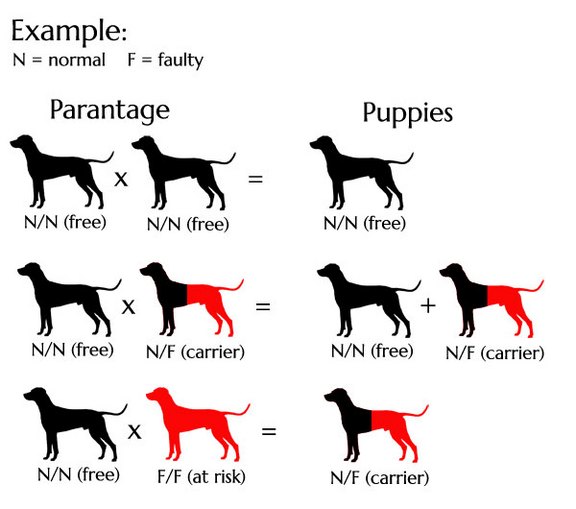Recessive inheritance
Autosomal recessive inheritance
In genetics, recessive means "receding" or "not appearing". A recessive gene must be homozygous (homozygous) in order for it to determine a trait (meaning that this trait is then also expressed). Homozygous means that this recessive gene must come from both sides.
A recessive gene is usually caused by a mutation and can lead to a trait with limited functionality. This can be a disease but also another trait such as a coat color like dilute.
If this gene is heterozygous (mixed) - i.e. only one partner has this one allele on one gene - then the non-defective (wild type) allele can cover the possible functional restriction and compensate for the deficiency function of the defective allele (Mendel's rule).
The best way to illustrate this is in a graphic.

A mating with a diseased dog must of course never be carried out. This is also shown in the diagram to illustrate that a sick dog does not necessarily have sick puppies.
Through compensatory mating (one partner is a carrier of the gene, the other is free), a recessive inheritance is very easy to control in breeding.
